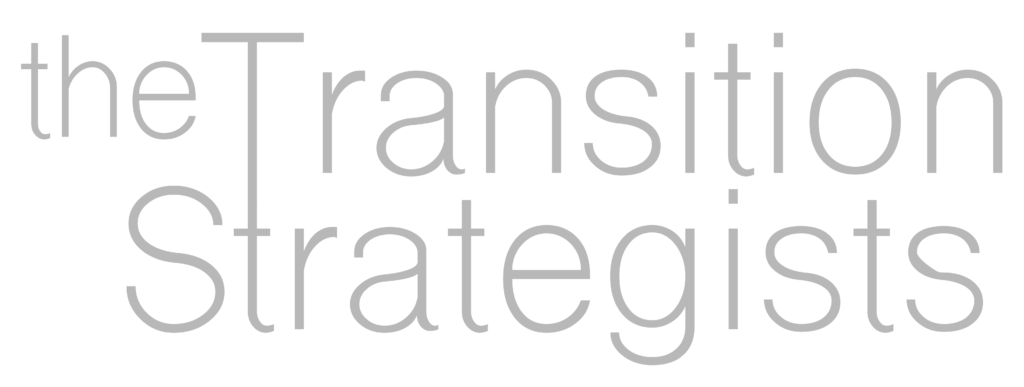We’ve all heard the term “codependency.” It describes an unequal and dysfunctional
relationship between two people in which one person gives and gives, and the other takes and takes.
In the business transition world, we see mutual dependence: a dynamic between owners and their businesses that is not characterized by one party always giving and the other always taking. Instead, both business and owner give to the other.
This mutual dependence—business on owner, and owner on business—is completely understandable. Many owners started their businesses, nurtured, lost sleep over, and invested in them for decades. They have worn many hats: from first person in every morning to the last to leave at night. From janitor to motivator, rainmaker to dream-maker, operations supervisor, idea generator, financial backer, reputation booster, bookkeeper, PR agent, R&D department leader, and more.
Of the many owners we’ve worked with over the years, all of their companies were, to varying degrees, dependent on them, and they were dependent on their companies. It’s not a relationship most owners give much thought to, but as transition strategists, we know that the mutual dependency between owners and businesses must end if a transition is to be successful. As we define it, transitions are successful only if: (1) owners move on to great Next Adventures; and (2) their companies succeed after they leave them.
The Big Question
In this article, we ask you the same question we ask our clients as they begin to think about their Next Adventures: In what ways is your business dependent on you and in what ways are you dependent on your business?
We want to help you lighten both sides of the dependency scale so that you are not dependent on your company for income, personal fulfillment, identity, social engagement, and stature in the community. At the same time, we want to minimize or eliminate your company’s dependence on you for your knowledge, talent, rainmaking abilities, business relationships, financial strength and, possibly, its identity.
The Ties That Bind Owners To Their Businesses
Personal Income
The primary source of income for most owners is compensation from their companies in the form of salary, benefits, distributions and dividends. Ideally, the quality of an owner’s Next Adventure does not depend on squeezing every last dollar of value from their ownership interest. Certainly, you want and deserve to reap a reward from a lifetime of investing in your company yet, like our clients, you have other transition priorities, such as maintaining healthy relationships with family members, business partners and key employees.
Happiness/Fulfillment
One of the reasons some owners begin to think about embarking on their transition journey is that they are no longer getting the same thrill or deriving the same level of fulfillment from their businesses. And yet, even these owners still feel connected to their companies and care deeply about their ongoing success. Owners who have built enterprises that have supported their families, employees, and communities well may wonder how they will find fulfillment once they no longer own and run their companies. That’s an excellent question.
Relationships With Their Teams And Communities
Owners occasionally (or frequently!) spend more time with members of their management teams than they do with members of their families. Many find these work relationships to be richly rewarding. In addition, owners of successful businesses often play important roles in their communities. They and members of their teams often belong to multiple charitable and business organizations and support causes and sponsor events that are important to them, their communities and customers. Community activities often yield friendships and social engagement opportunities. When you move on, strong ties to people both inside and outside of your business can weaken or disappear. How will that affect you?
The Ties That Bind Business To Owner
Our standard for a successful business transition is a high one: only when all parties—former owner, successor and company—thrive after the transition is complete is a transition successful. To meet that standard, not only must owners end their dependence on their companies, but they must also sever their companies’ dependence on them.
Businesses are typically dependent on their owners for:
• Knowledge/talent
• Rainmaking
• Business relationships
• Financial strength and stability
• Identity
Knowledge/Talent
Have you thought about how your business will continue to thrive without your knowledge and talent? Since there is never perfect alignment between an owner’s and a successor’s talents and areas of expertise, successor development is an important part of the transition journey. We develop a Focused Action Navigator in every Transition Roadmap to list and describe, in detail, the specific actions (or focus items) that owners and successors must take to achieve the milestones on the transition journey. Beyond that, some owners and successors hire to fill the gaps. Investing time in successor development diminishes your company’s dependence on you and positions your successor for ongoing success.
Rainmaking
Owners are often a major source of sales and the driver of new revenue initiatives. If you see yourself in that description, you just pass this torch to ensure the continued growth and success of your company.
Business Relationships
Many owners have relationships with customers, key vendors and strategic alliances that are based on the trust that comes from a long history of working together. Do you make handshake agreements with any of your suppliers? Will the vendors who give you favorable payment terms because they trust you do the same for your successor with whom they have no history? The earlier you begin to involve your successor in trust-based business relationships, the more time you give yourself to properly transfer these relationships to them.
Financial Strength and Stability
There are two components of mutual dependence that relate to the financial strength and stability of a business. The first is debt: obligations that often depend on the relationships owners forge with financial institutions. For example, a bank’s willingness to extend a line of credit or finance a loan (collateralized or uncollateralized) may have been due to the credit worthiness and financial stability of the soon-to-be former owner. Similarly, an insurance company may have extended bonding due to its longstanding relationship with an owner. New owners haven’t had the opportunity to establish relationships with these institutions.
We’ve found that transferring debt obligations and financial commitments make the transition of business relationships and knowledge look like walks in the park. In transitions to family members transferring debt is one of the most difficult and last things to be transitioned simply because new owners typically do not start out with sufficient financial resources.
The second component is the financial stability that comes from the often-significant financial investment many owners have in their businesses. During the life of a business, the investments owners make in their companies (in the form of cash or assets) provide the financing needed for expansions, capital projects or to temporarily stabilize cash flow. When successors pay former owners for years of investments in their companies through the purchase of owners’ equity, successors typically need the cash flow of the business to make those payments. The cash
successors might have used to invest in expansions and capital projects goes instead to the former owners or the banks which financed the successors’ loans. . This means that the cash which a company may have relied on for years to build and grow is not available until the successor has paid for most, or all of, the former owner’s equity.
Identity
In some businesses, customers, vendors, and members of the community make no distinction between a business and the family that owns it. If the name of the company is well-known and respected, and the business is transitioned to a family member, the successor may wish to retain the company name. If a successor chooses to change the company name, however, we suggest that owners begin to separate their names (or that of their families) from the names of their companies
before they make their transitions out of ownership.
If successors choose to re-brand a company under their ownership, we recommend that owners and successors work together to craft detailed plans to minimize any confusion in the marketplace. Plans might develop consistent messaging for internal and external communications, marketing programs, and press releases.
Knowledge, talent, rainmaking, business, financial relationships, and an intertwined identity are the common ties we ask owners to think about—and work to transfer to their successors—before handing over the keys.
We’ve created a guide to help you identify the areas in which you might be dependent on your company and your company might be dependent on you. Working to minimize areas of dependence early in your transition journey gives your successor and team the time they need to acquire critical knowledge and benefit from the relationships necessary to lead the company to a successful future. Not incidentally, if the quality of your Next Adventure depends on the company’s continued success, eliminating mutual dependency vastly improves the odds of reaching your goal. And, if you choose an external third party as a successor, by minimizing your company’s dependence on you, your company is more saleable and more valuable to a buyer.
Elizabeth Ledoux is a co-author of the award-winning It’s A Journey: The MUST-HAVE Roadmap to Successful Succession Planning, as well as Accelerate Your Entrepreneurial Flight and Understanding the Growth of the Entrepreneur. She frequently speaks to organizations and business owners about challenges and opportunities in private and family business transitions, business and individual growth, and the business succession journey.





